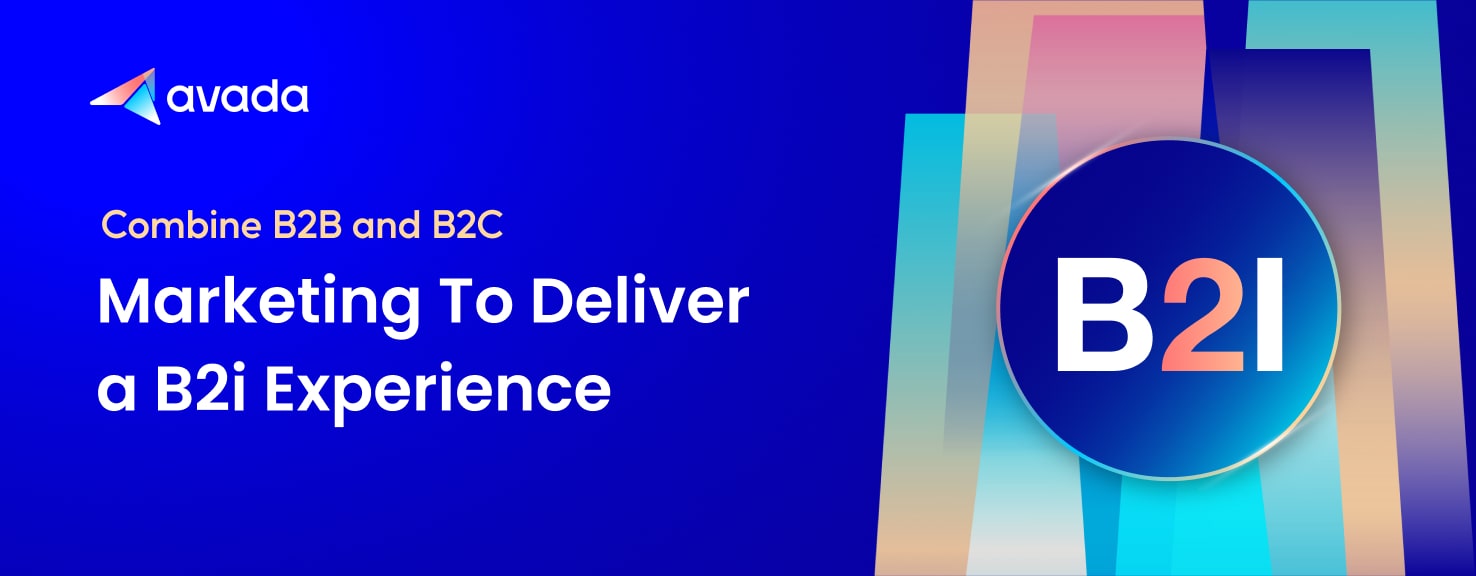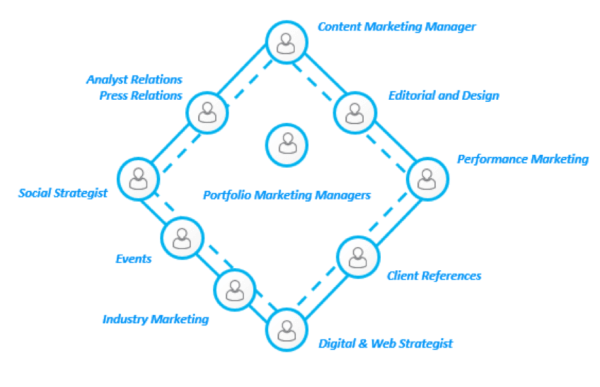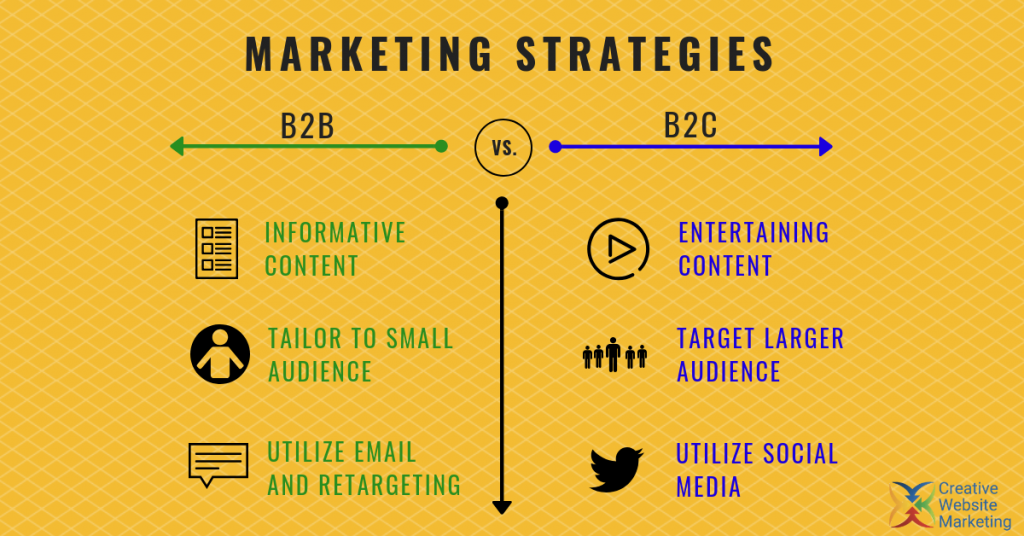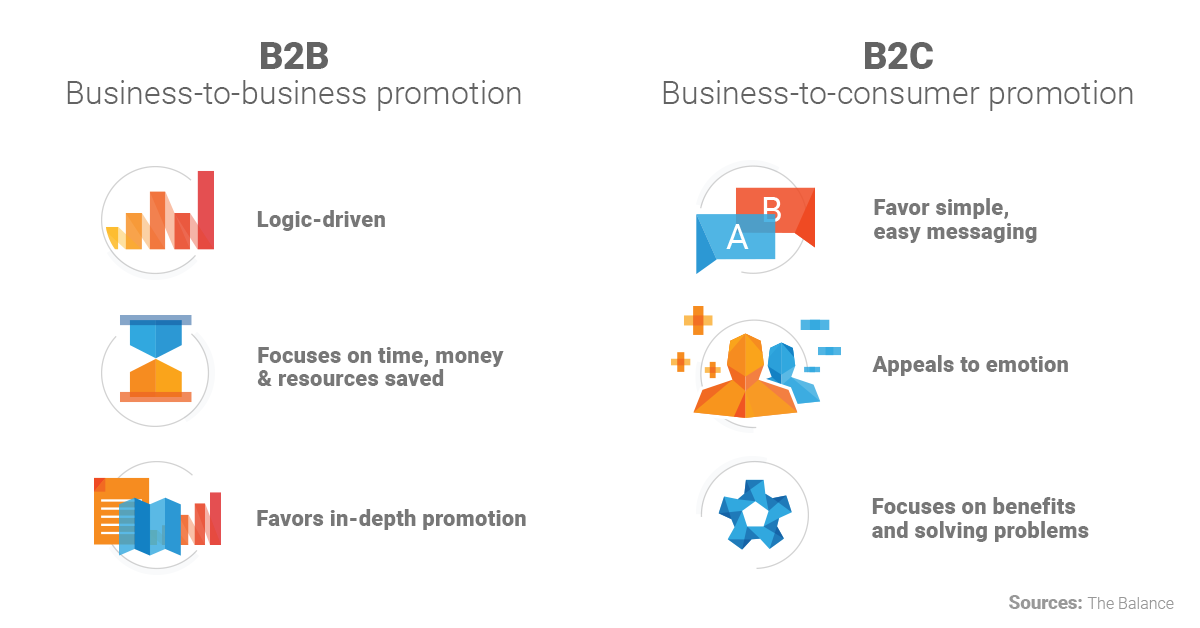How To Combine B2B and B2C Marketing To Deliver a B2i Experience

For most of the last decade, the primary division in digital marketing has been between business-to-business (B2B) approaches and those that focus on the business-to-consumer (B2C) market. As we enter the 2020s, however, it’s becoming increasingly apparent that a new class of buyer is emerging that fits neither of these categories. Or, rather, of individuals that use the same research methods, and have similar expectations, whether they are purchasing for business or for personal use.
This means that today it might not be so helpful to think of your customers as businesses or consumers, but something in between and far more fundamental – individuals. That’s what the “I” in B2i stands for, and is the driving force behind a new paradigm in marketing and online business. And though differences remain between the two groups – personalization should be approached in a different way for each, for example – they share more than you might think.
In this guide, we’ll explain what B2i marketing is, how you can approach this exciting new market, and share some practical tips on doing so.
What exactly is B2i?
Business-to-individual, better known as B2i, may sound like a buzzword. But it’s really a term for a marketing paradigm shift that has been occurring over the past few years. The idea is to make the best of B2C - such as personalization and focus on individual motivations and preferences - and B2B - such as relationship-building sales and focus on product relevance - and combine them.

B2i combines elements of both to create marketing strategies that prioritize the individual customer experience. After all, even when you sell your products to businesses, you are still working with individuals. In both B2B and B2C marketing, there is an increased expectation and need for tailored communication and multiple touchpoints that nurture every customer along their buyer journey. With B2i, customers should be provided with relevant information and attention at the right times and from the right people, without making every interaction fully transactional.
The rise of B2i
There are two main reasons why B2i is one of the most important trends shaping the consumer experience in 2021, and both are reflective of the changing ways in which customers (of both types) interact with the web.
Even just a few years ago, the channels through which you would reach B2B customers – trade shows, specialist publications, and direct selling – were very distinct from those you would use to reach B2C customers. B2C marketing was largely focused on mass-market web customers, and their customers were assumed to be less valuable because they didn’t have corporate purchasing budgets to spend.
It’s becoming rapidly apparent, however, that this assumption was completely wrong. Or at least it has become so. In an ever-more-dynamic business environment, there is no longer a clear distinction between “business” and “personal” customers. Many individuals now work for multiple companies alongside running their own business and also freelancing. Not only can this mixed model be lucrative for individuals – the average pay for a freelancer in the US last year was $45 an hour – but it also eliminates the distinction between consumer and business customer.
That change has been partially driven by the ubiquity of the web. It used to be assumed that purchasing managers for large corporations didn’t look online to make large purchases, and therefore that B2B customers were not susceptible to the same kind of marketing techniques – personalization, limited-time offers – as their consumer peers.
Now, the standard way of looking for new products, whether you are buying industrial gases or a new pair of headphones, is online. And rather than a faceless, impersonal “consumer”, marketers need to start looking at each and every customer as an individual.
In other words, B2C and B2B are about to merge.
B2B and B2C are merging
B2i is currently the most sophisticated way of expressing the fact that B2C and B2B are merging. Rather than arbitrarily splitting your customer base into two distinct silos, you should recognize that everyone (even purchasing managers) are individuals. This means that you can bring together techniques from B2C and B2B marketing into one integrated approach.
The merging of B2C and B2B into B2i has a number of key consequences for online marketers. One of these is to recognize the value of trust to all consumers. While the internet has allowed consumers to directly access goods and services – just think of the demise of travel agents as an example – it has also led to a crisis of trust. When buying online, most customers’ primary question is “do I trust this company to deliver what they say they can?”

And while the value of trust has long been recognized in the B2B sector, due to the size and stability of corporate purchasing accounts, it has not always been an important part of B2C marketing, where a certain amount of “churn” is expected. For companies moving to B2i from B2C, this means that building trust with each and every customer is the major challenge.
There are lessons to be learned the other way, as well. B2C marketing techniques – and especially those that relate to personalization – are way in advance of their B2B analogues. B2B companies looking to expand into the B2i market should therefore look to their digital tools first, and invest in systems that will allow them to make the most of the data they collect.
Delivering B2i

B2i is more than a marketing toolkit. It’s a paradigm shift that requires rethinking your approach to customer interactions. These aspects form the core of the B2i paradigm:
Employ empathy in your marketing
The importance of a personal connection to a brand has long been recognized in B2C marketing, but less so in B2B. Yet many companies are now realizing that emotional responses play just as large a part in B2B purchasing decisions as consumer-level ones. IBM, for instance, has recently shifted its marketing model to one that makes use of “Diamond Teams” – teams with cross-cutting expertise that are better able to build trust with B2B customers in exactly the same way that B2C marketers have pioneered.
B2i marketers must recognize that both audiences carefully research brands before they buy, and they’re not afraid to share what they think publicly. Building empathy means that you must begin to think like your consumers and take their feedback to heart. Don’t be afraid to ask them what they want. Observe your customers’ pain points, and then tailor your marketing to show them how you can fix these problems.
Put the customer in the driver’s seat
B2C customers aren’t the only ones who want a hands-off, virtual buying experience these days. Particularly during the pandemic, the days of trade shows and in-person sales meetings are dwindling in B2B transactions. Instead, you can offer your customers a self-guided, online experience with control over their accounts and customization.
This isn’t to say you should get rid of sales personnel. Depending on your product, you may still rely on fewer, higher-priced transactions with the businesses you work with. But the key is to strike a balance between self-sufficiency and customer service.
Provide independence, not lack of involvement. You need to provide some sales and customer service touch points so customers don’t feel like they’re left to fend for themselves, but customers will also appreciate being able to customize their plans and products without having to call you every time they want to do something.
Emphasize relevance
B2B marketers can sometimes be guilty of under-estimating the mass market appeal of their products or services. Today, in a world where many people run their own business alongside their main profession, you are missing an opportunity if you don’t reach out to individuals as well. You can reach both individuals and businesses by building a consumer-focused marketing strategy that stresses your relevance.
One recent study showed that 91% of consumers said they were more likely to shop with brands that remember their preferences and use them to provide relevant offers and recommendations. Both the B2B and B2C eCommerce markets are more saturated than ever, so you can’t afford not to remind customers why your brand adds immediate value for them. And note we didn’t just say your product. Your business is more than just the things you sell. And note we didn’t just say your product. Your business is more than just the things you sell.
Practical tips for implementing B2i
There are a number of practical steps that companies can take to evolve their marketing to bring together B2C or B2B techniques:
Educate your customers
We previously mentioned marketing with empathy. In addition to asking customers about their pain points and user experience, education is a good tactic for marketing with empathy.
A ‘How to’ video series, for example, can show customers how they can use and benefit from your product or service without being overly sales-y. The details of the product may change for B2B vs. B2C clients, but the genuine investment in teaching prospects how to use it doesn’t have to. You can even look at the challenges and frustrations your customers express and create informative content around those topics.
Use tailored and triggered communications
Tailored recommendations help to render you relevant to your customers. Recommendations can come in the form of deals, related products, local events, articles/videos, and more. As long as you tailor them to the interests and needs of the buyer, incorporating these marketing materials will keep you relevant no matter who your customer is.
You should also target customers based on activity level. Both B2B and B2C marketers tend to pay attention to stages of customer journey, but these stages are traditionally different. With B2i, the focus should be on activity-based communication. Triggered emails are a good example of this tactic.
Build a self-service interface
Remember what we said about that self-guided, customer-focused experience? Well, even if you’re not a developer or designer, building a user-friendly interface might actually be easier than you think. There are plenty of all-purpose eCommerce platforms out there that make it easy for individuals to navigate products, make payments, upgrade their plans, and more with a flexible online storefront.
What’s more, according to online marketer Nathan Finch of Best Web Hosting Australia, modern website building tools are designed to be easy-to-use by everyday people. “Certain user-friendly website builders will utilize drag-and-drop controls,” says Finch. “This allows you to build your own website from premade parts but still customize the site enough that it looks unique among the greater Internet.” You don’t have to be a web development expert to prioritize UX, but you do need to make it a focus of your B2i strategy.
This will allow users to customize their plans and do other important functions on their own. Knowledgeable customer service and sales professionals can still be standing by in the case of an incident, but customers will appreciate the ease and control. And don’t be afraid to tell both B2C and B2B customers the perks of the all-virtual platform. If explained properly, it won’t seem like you are decreasing touchpoints. Rather, it will show them that you understand the importance of convenience and customization.
Test-drive your UX
We can’t say it enough: B2i is all about user experience. This means you need to audit your own processes to make sure it is simple and user friendly.
The checkout process is a big one here, since it can be such a significant factor in how likely customers are to abandon their cares. Other aspects of your website and marketing, like product pages and email discount codes, can also cause issues if you’re not attentive to them. Have multiple team members go through the sales funnel on a regular basis to make sure it satisfies customer needs and doesn’t hit any snags.
Train all teams on selling
To make the most of B2i principles, multiple customer touch points should be equipped to turn customer interactions into sales opportunities without being overly pushy. For example, customer service reps might have the opportunity to up-sell or cross-sell in the process of resolving a customer complaint. Train employees across different departments and empower them to serve customers to the best of their abilities - and increase your revenue in the process.
The bottom line
For many marketers, the emergence of B2i (or the even newer B2P paradigm) will not come as a surprise. In fact, this “new” idea can be seen as an encapsulation of an insight that successful online marketers have long taken for granted – that all customers, whether they are representing a business or not, are humans, and that it is only by recognizing this that we can build trust with them. And with trust comes sales.
This post was contributed by Kate Noether
New Posts






